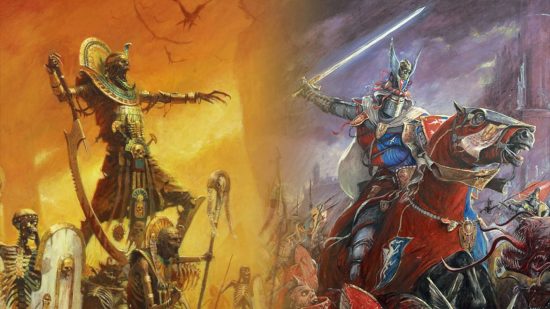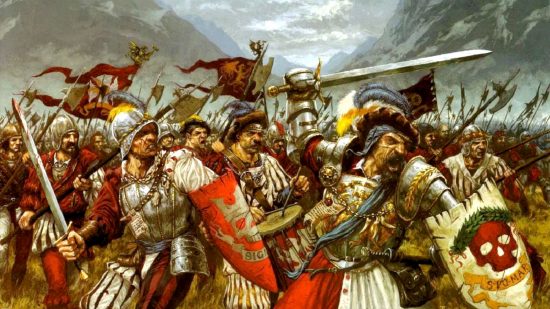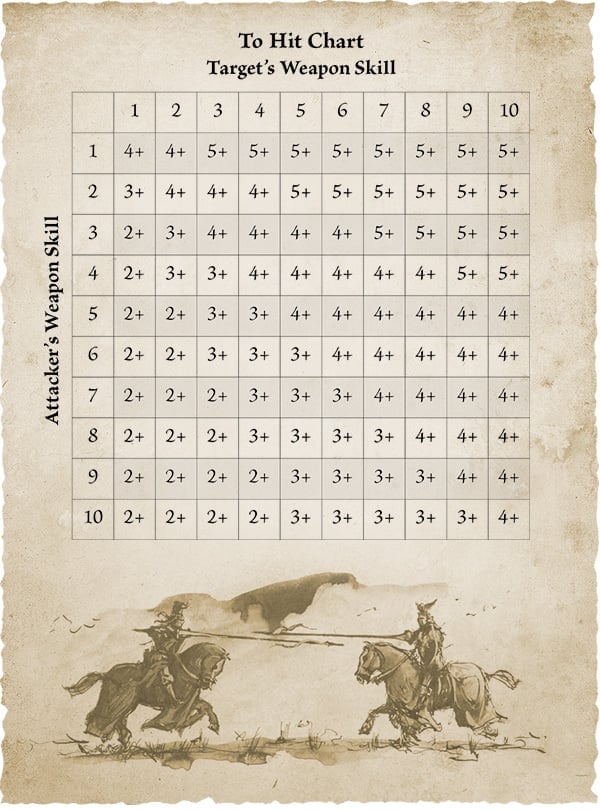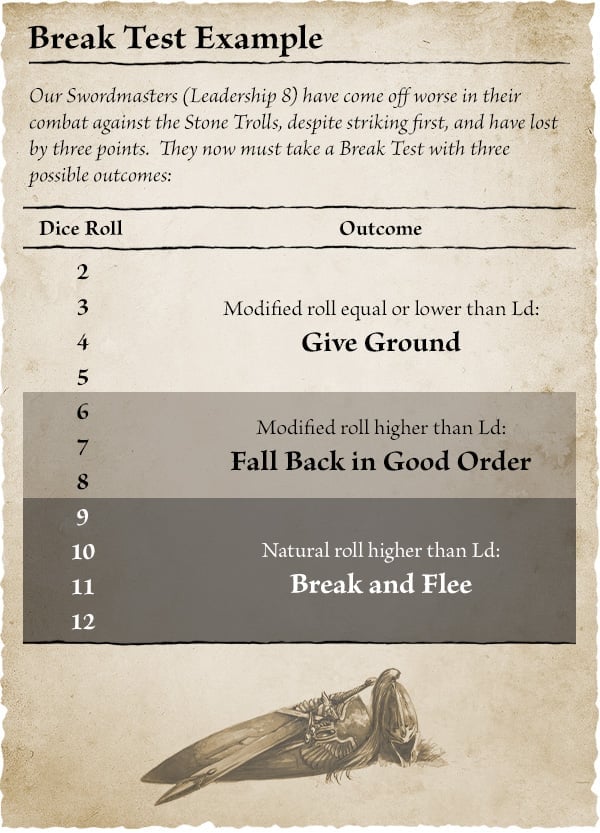Games Workshop has previewed the rules for the Warhammer the Old World Combat Phase, via Warhammer Community articles on Monday 20th and 27th November. While elements like rolling to hit and to wound remain consistent with older editions of Warhammer Fantasy, the possible outcomes of combat have changed considerably.
Wargamer has been tracking Games Workshop’s Warhammer the Old World rules reveals, and marking the similarities and differences between the present and previous editions of Warhammer fantasy battle. Expect plenty more reveals before the – as yet unrevealed – Warhammer the Old World release date.
Here’s everything we know about the Warhammer The Old World Combat Phase so far:
During the Combat Phase, the active player will pick a combat between (at least) one of their units and (at least) one enemy unit. They’ll resolve the combat, moving through four sub-phases; Choose & Fight, Calculate Result, Break Test, and Pursuit. Here’s what happens in each sub-phase:
| Combat sub-phase | What happens |
| Choose & Fight | The active player will pick one combat, and each unit engaged in the combat will fight, causing casualties to enemy units. |
| Calculate Result | Each player adds the number of wounds they inflicted, plus other modifiers, to determine a Combat Result Score: the high score wins the combat. |
| Break Test | The losing side makes a Leadership test, modified by the degree to which they lost combat; their score determines whether they Give Ground, Fall Back in Good Order, or Break and Flee. |
| Pursuit | The winning side may Follow up a unit that gives ground, attempt to Pursue a fleeing foe, or attempt to Restrain their units from pursuing |
Once one combat is fully resolved, the active player picks another combat and repeats the process, and so on, until all combats have been resolved.

Choose and Fight sub-phase
The front rank of a unit is called the ‘fighting rank’, and is allowed to fight in combat. Units may have abilities that grant them additional fighting ranks or allow models to make “supplementary attacks” from deeper within the unit.
Every model in the fighting rank gets to attack, whether it is contacting an enemy model or not, representing models lapping round and enveloping the enemy unit.
The WarCom article from the 20th says that “any model that is able to fight without being in base contact may only make one attack this turn”; as written, that suggests models in the fighting rank must be in base contact to make all their attacks.

Initiative
Models make attacks in Initiative order, from highest initiative to lowest. WarCom states that there is an initiative “bonus for charging and a bigger one for hitting them in the flank or rear”. In previous editions, two-handed weapons made a model fight at effective initiative one.
Casualties are removed from the back ranks of units, not the front, so models will only be prevented from fighting if their unit is fully destroyed before they strike back.
Weapon skill table
To determine the roll you need to hit a model in combat, compare the attacker’s and defender’s Weapon Skill.
| To Hit roll | |
| Attacker’s WS more than twice the defender’s WS | 2+ |
| Attacker’s WS greater than defender’s WS | 3+ |
| Defender’s WS greater than or equal to attacker’s WS | 4+ |
| Defender’s WS more than twice attacker’s WS | 5+ |
Melee attacks use the same rolls to wound and for armor saves as in the shooting phase.
Calculate Combat Result sub-phase
During the Calculate Combat Result sub-phase you will determine whether one side lost the combat, and by how much. Each player calculates a Combat Result Score, using the following combat result table, with the higher score winning the combat.
| Factor | Combat Result modifier |
| Each unsaved wound inflicted | +1 |
| Rank bonus | +1 / rank |
| Standard | +1 |
| Battle Standard | +1 |
| Flank attack | +1 |
| Rear attack | +2 |
| High ground | +1 |
| Overkill | +1 / excess wound |
| Other bonuses | As specified |
The article doesn’t explain ‘overkill’. In previous editions of Warhammer Fantasy this referred to excess wounds caused to an enemy character during a ‘challenge’ (a duel between heroes).
Break Test sub-phase
The player who loses the combat makes a Break Test for each unit involved. This is a Leadership Test, modified by the difference between the two players’ Combat Result Scores.
Unlike previous editions of Warhammer, several different results are possible, depending on whether the natural roll, the modified roll, or both, are less than or equal to the unit’s Leadership stat.
| Natural roll | Modified roll | Outcome |
| Less than or equal to Leadership | Less than or equal to Leadership | Give Ground |
| Less than or equal to Leadership | Greater than Leadership | Fall Back in Good Order |
| Greater than Leadership | Greater than Leaderhip | Break and Flee |
A WarCom article published on November 27 explains how these different outcomes affect the unit that lost the combat:
| Combat outcome | Effect |
| Give Ground | Retreat 2″ from winning unit (if terrain permits) |
| Fall Back in Good Order | Roll 2D6, optionally dropping lower die: retreat that many inches, then rally and reform. |
| Break and flee | Retreat 2D6″ from the winner, pivoting only to avoid impassable terrain. May pass through friendly units. Take extra wounds if passing through enemy units. Destroyed if they reach battlefield edge. |
Pursuit sub-phase
Depending on the outcome of the combat, the attacker has different Pursuit options to follow up their defeated foes. If they don’t wish to pursue, they can attempt to Restrain their units by taking a Leadership test: if successful, the unit remains stationary and can freely reform its ranks.
| Combat Result | Attacker’s option |
| Enemy wiped out | May ‘Overrun’ directly forward, making a full move. Engaging a new enemy unit counts as charging them. |
| Enemy flees | May attempt to Pursue 2D6″. Catching the enemy unit destroys them. |
| Enemy falls back in good order | May Pursue 2D6″. Catching the enemy unit starts combat again, counting as charging them. |
| Enemy gives ground | May Follow Up, re-entering combat “a few inches forward”. |
The extra granularity in Break Tests is the biggest overhaul to the Warhammer rules we’ve yet seen for Warhammer The Old World, though this system is still immediately recognisable as classic Warhammer fantasy. It’s a promising time for fans of older Games Workshop games: check our Legions Imperialis review to see how well the classic Epic game system has been revived for modern audiences.


